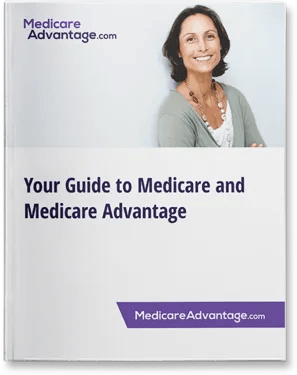Medicaid uses the federal poverty level (FPL) as a benchmark to determine income limits for eligibility in each state. Also known as the “poverty line,” the FPL is the amount of annual income earned by a household.
The poverty line is a basis for how much money is needed to cover basic necessities like housing, utilities and food, and it varies according to household size.
Compare plans today.
Speak with a licensed insurance agent
How much is the federal poverty level?
The federal poverty level in 2023 is equal to an income of $14,580 per year for an individual adult, plus $5,140 for each additional household member. Alaska and Hawaii have different benchmarks because of their differing costs of living.
2023 Federal Poverty Eligibility Level by State
|
Number of people in home
|
48 states and Washington D.C.
|
Alaska
|
Hawaii
|
| 1 |
$14,580 |
$18,210 |
$16,770 |
| 2 |
$19,720 |
$24,640 |
$22,680 |
| 3 |
$24,860 |
$31,070 |
$28,590 |
| 4 |
$30,000 |
$37,500 |
$34,500 |
| 5 |
$35,140 |
$43,930 |
$40,410 |
How do you calculate your Medicaid income eligibility?
Follow these steps to calculate whether or not your income may qualify you for Medicaid:
- Find the FPL for your household using the chart above
- Multiply that number by your state’s Medicaid income limit found below, and then divide by 100
For example, if there are two people living in your household and you live in Arizona, you would multiply $19,720 (the FPL for a two-person household) by 138 (Arizona’s Medicaid limit is 138% of the FPL) and then divide by 100. That equals $27,213.60.
You may also multiply $19,720 by 1.38.
Compare plans today.
Speak with a licensed insurance agent
What is income to qualify for Medicaid in my state?
Most states use a standard of 138% of the federal poverty level as a basis for Medicaid eligibility. But each state is free to set its own limits.
The table below shows the income limit as a percentage of the FPL required for Medicaid eligibility in each state for two-parent households and for individuals adults.
If “0%” appears, that means individuals may not qualify for Medicaid in that state based on income alone and must meet other criteria, such as being pregnant or disabled.
Medicaid Income Limit by State (As a Percentage of FPL)
|
State
|
Two-parent households
|
Individual adults
|
| Alabama |
18% |
0% |
| Alaska |
138% |
138% |
| Arizona |
138% |
138% |
| Arkansas |
138% |
138% |
| California |
138% |
138% |
| Colorado |
138% |
138% |
| Connecticut |
160% |
138% |
| Delaware |
138% |
138% |
| District of Columbia |
221% |
215% |
| Florida |
28% |
0% |
| Georgia |
31% |
0% |
| Hawaii |
138% |
138% |
| Idaho |
138% |
138% |
| Illinois |
138% |
138% |
| Indiana |
138% |
138% |
| Iowa |
138% |
138% |
| Kansas |
38% |
0% |
| Kentucky |
138% |
138% |
| Louisiana |
138% |
138% |
| Maine |
138% |
138% |
| Maryland |
138% |
138% |
| Massachusetts |
138% |
138% |
| Michigan |
138% |
138% |
| Minnesota |
138% |
138% |
| Mississippi |
28% |
0% |
| Missouri |
138% |
0% |
| Montana |
138% |
138% |
| Nebraska |
138% |
138% |
| Nevada |
138% |
138% |
| New Hampshire |
138% |
138% |
| New Jersey |
138% |
138% |
| New Mexico |
138% |
138% |
| New York |
138% |
138% |
| North Carolina |
37% |
138% |
| North Dakota |
138% |
138% |
| Ohio |
138% |
138% |
| Oklahoma |
138% |
0% |
| Oregon |
138% |
138% |
| Pennsylvania |
138% |
138% |
| Rhode Island |
138% |
138% |
| South Carolina |
67% |
0% |
| South Dakota |
43% |
0% |
| Tennessee |
82% |
0% |
| Texas |
16% |
0% |
| Utah |
138% |
138% |
| Vermont |
138% |
138% |
| Virginia |
138% |
138% |
| Washington |
138% |
138% |
| West Virginia |
138% |
138% |
| Wisconsin |
100% |
100% |
| Wyoming |
47% |
0% |
FPL is used to determine eligibility for Medicaid, certain welfare benefits and other assistance programs. The FPL is computed by the U.S. Census Bureau and can be adjusted every year based on inflation.
Medicaid uses a percentage of the FPL to determine its income limits for eligibility. For example, you may qualify for Medicaid if you earn less than 133% of the federal poverty level. Or you may qualify if you earn less than 150% of the federal poverty level and are disabled. Again, each state sets its own income limits to determine Medicaid eligibility.
Contact your state Medicaid program for more eligibility information, as most states offer different types of Medicaid programs that may each have their own income limits and other qualifying criteria. Even if you make more than the standard limit found below, there may be additional programs for which you still qualify.
Compare plans today.
Speak with a licensed insurance agent
Who qualifies for Medicaid?
In all but 10 states, adults who make below a certain income may qualify for Medicaid. In all states, Medicaid is available to people who make a low income and also meet other criteria such as being at least 65 years old, disabled, pregnant or other qualifications.
Each state runs its own Medicaid programs with its own set of qualifying criteria.
What is the highest income to qualify for Medicaid?
Washington D.C. has the highest allowable income to qualify for Medicaid, at 215% of the FPL for individuals and 221% for a family of three.
That means an individual in Washington D.C. can make up to $31,347 per year and still be eligible for Medicaid. Washington D.C.’s high cost of living factors into its higher income limit for Medicaid. No other state uses more than the standard 138% limit for individuals.
A family of three can make up to $54,940 and still qualify for Medicaid in Washington D.C. Connecticut is the only other state to use a limit higher than 138%.
What is the lowest income to qualify for Medicaid?
There are 10 states that do not grant Medicaid access to individuals based on income alone.
Of those that do, only Wisconsin uses a limit lower than 138%. An individual in Wisconsin can make no more than the federal poverty level in order to qualify for Medicaid.
Texas has the lowest income limit to qualify on a family basis, at 17% of the FPL.
Is it hard to qualify for Medicaid?
As long as you meet the eligibility rules in your state, it is not hard to qualify for Medicaid. After all, almost 74 million Americans are covered by the program.
Contact your state Medicaid program in order to apply for Medicaid. Applications are generally reviewed and approved within 90 days and typically are reviewed sooner.
Medicaid and Medicare Dual Eligibility
If you qualify for both Medicare and Medicaid, you are considered “dual eligible.” In this case, you may qualify for a certain type of Medicare Advantage plan called a Dual Eligible Special Needs Plan (D-SNP). D-SNPs are designed to meet the specific needs of people who have Medicaid and Medicare.
You can compare plans online to find out if D-SNPs are available where you live, or you can call to speak with a licensed insurance agent for information about eligibility and enrollment.
Compare plans today.
Speak with a licensed insurance agent










